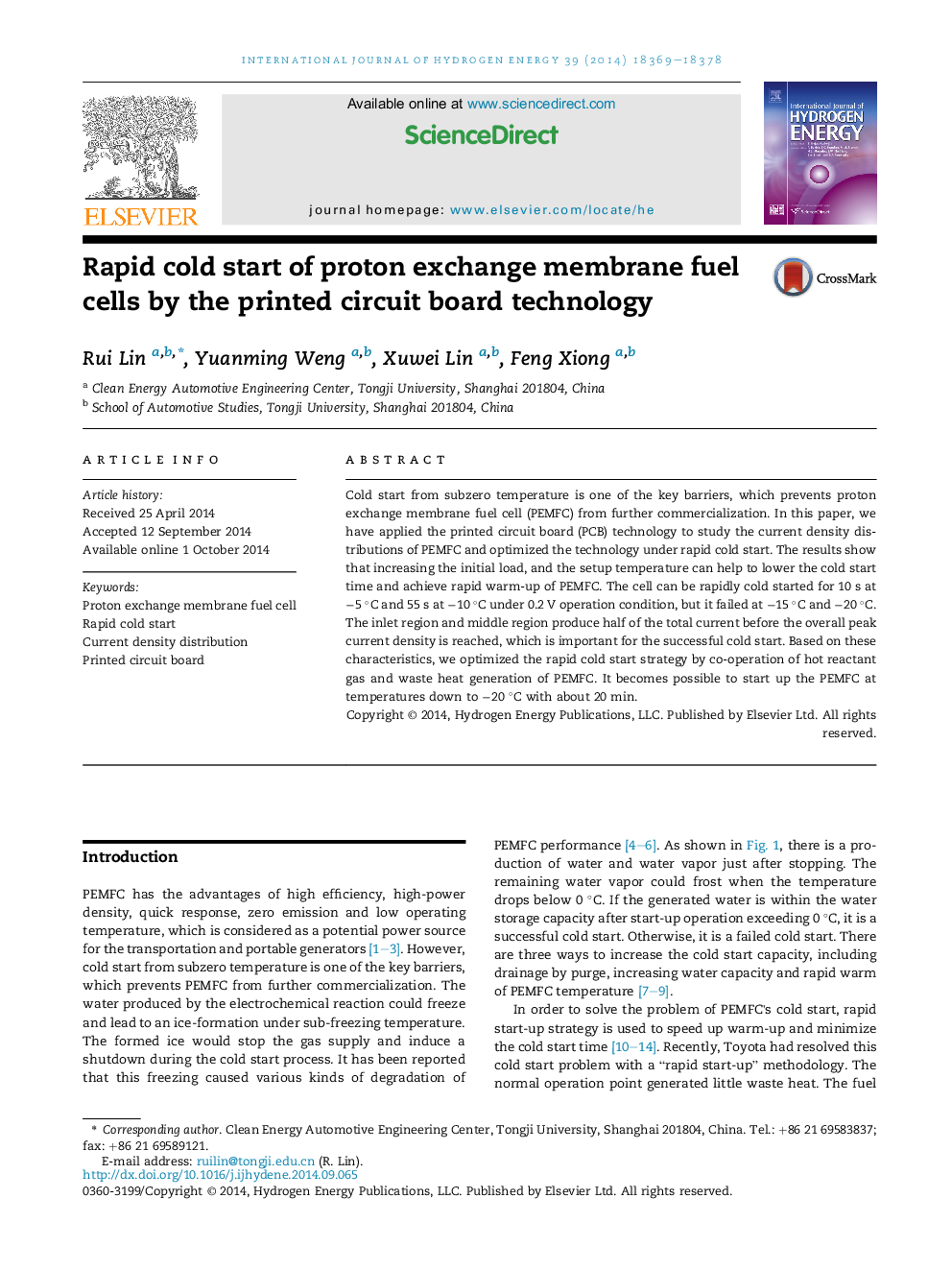| Article ID | Journal | Published Year | Pages | File Type |
|---|---|---|---|---|
| 1280847 | International Journal of Hydrogen Energy | 2014 | 10 Pages |
•Effect of load and setup temperature on the PEMFC rapid cold start were investigated.•PCB technology was applied to study the current density distribution of fuel cell.•The rapid cold start strategy was optimized by the PCB technology.
Cold start from subzero temperature is one of the key barriers, which prevents proton exchange membrane fuel cell (PEMFC) from further commercialization. In this paper, we have applied the printed circuit board (PCB) technology to study the current density distributions of PEMFC and optimized the technology under rapid cold start. The results show that increasing the initial load, and the setup temperature can help to lower the cold start time and achieve rapid warm-up of PEMFC. The cell can be rapidly cold started for 10 s at −5 °C and 55 s at −10 °C under 0.2 V operation condition, but it failed at −15 °C and −20 °C. The inlet region and middle region produce half of the total current before the overall peak current density is reached, which is important for the successful cold start. Based on these characteristics, we optimized the rapid cold start strategy by co-operation of hot reactant gas and waste heat generation of PEMFC. It becomes possible to start up the PEMFC at temperatures down to −20 °C with about 20 min.
